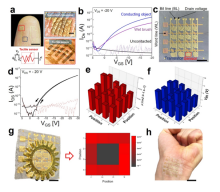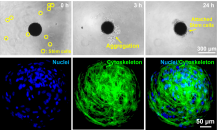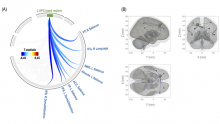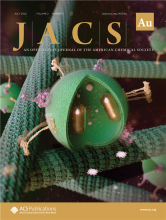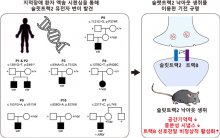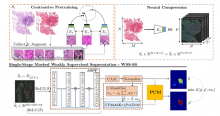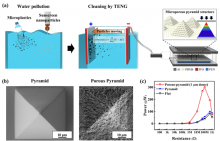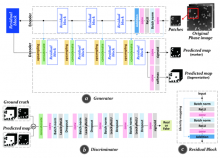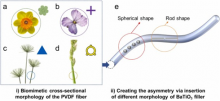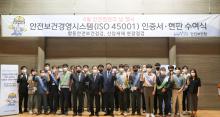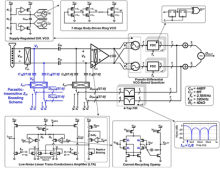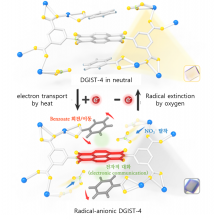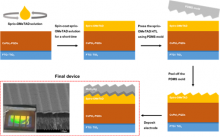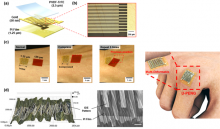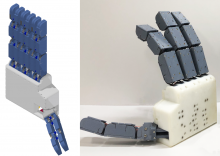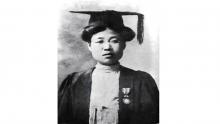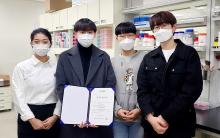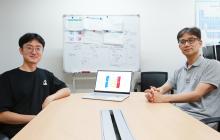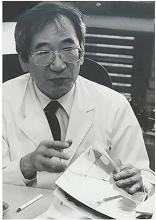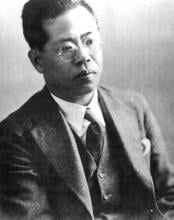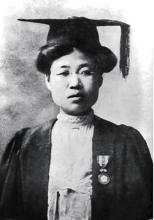South Korea
News
27 Sep 2022
- A research team led by Professor Lee Sungwon from DGIST succeeded in developing the world’s first mesh (nanomesh) structured electronic skin device (organic field-effect transistor)
- An electronic skin device comprising only a mesh (nanomesh) structure that can measure and process bio-signals for a prolonged period indicates a big step toward integrated systems for electronic skin devices.
27 Sep 2022
-Microrobots disintegrate in the body after delivering stem cells to the target point, and the delivered stem cells are verified to be capable of normal proliferation and differentiation.
-Expected to contribute to increasing the efficiency of regenerative medicine such as stem cell delivery.
07 Sep 2022
Giants in History: Hwang Hye-seong (5 July 1920 – 14 December 2006) was an expert on Korean royal court cuisine, the knowledge of which she dedicated her career to keeping alive.
11 Aug 2022
Human brains learn patterns over time and we don’t even realize it. New insight into how this works could improve learning and other cognitive processes.
10 Aug 2022
- DGIST Professor Seo Dae-ha's team developed a super-resolution microscopy that can observe 3D rotational motion of endosomes using gold nanoparticles
- By understanding cell transport more accurately through the observation of minute 3D rotation in intracellular transport, it is expected to develop into a disease diagnosis technology.
10 Aug 2022
- Joint research team of DGIST Professor Um Ji-won and Professor Ko Jae-won discovered several SLITRK2 synaptic adhesion gene mutations related to intellectual disabilities
- Identified the abnormal pattern in the signaling mechanism of SLITRK2 and presented a new therapeutic biomarker
10 Aug 2022
- DGIST Professor Park Sang-Hyun's research team developed a deep learning technology that accurately detects cancer sites with little information through joint research with a research team led by Professor Nam Su-jeong and Professor Ko Hyeon-Jeong of Seoul Asan Medical Center
- Expected to make significant contribution to enhancing the efficiency of deep learning models, which needed an accurately drawn dataset to detect cancer sites.
10 Aug 2022
- Joint research team comprising the DGIST Thin Film Solar Cell Research Center and the Department of New Material Engineering of Kyungnam University discovers the cause of pore formation in thin film solar cells of general-purpose materials and developed technology to resolve the problem
- Suggested strategies for developing eco-friendly general-purpose thin film solar cells by suppressing pore formation
10 Aug 2022
- DGIST Professor Seo Dae-ha's team developed an experimental strategy to control and observe the chemical reaction of a single nanocatalyst using an optical microscope
- Expected to contribute to catalyst design based on accurate understanding of the photocatalytic reaction through an analysis method that helps understanding the electron excitation phenomenon and transition path.
10 Aug 2022
- Joint research team of DGIST and Korea Institute of Industrial Technology developed the first technology that removes microplastics in water through triboelectric nanogenerator
- Expected to solve the problem of various microtoxic particles in water including microplastics, which have emerged as a huge environmental concern
10 Aug 2022
- Developed technology to accurately inspect the quality of red blood cells stored for a certain period of time with AI-based holography technology
- Possible to inject clean, healthy red blood cells into the patient. Expected to help minimize side effects of blood transfusion after surgery.
10 Aug 2022
- Clarified the relationship between the form of piezoelectric fiber components and their piezoelectric performance
- Accelerated commercialization of energy harvesting textile materials that can recycle energy wasted or consumed in everyday life
10 Aug 2022
Highest-level international certification on safety and health granted to organizations that excel in preventing risk factors related to safety accidents
01 Jul 2022
- DGIST Professor Lee Jung-hyup's team develops an 'analog-digital signal conversion system' based on semiconductor IC technology that can measure ultra-fine signals generated in the body
- Capable of taking precise measurements of fine signals amidst strong external noise, application to next-generation brain-machine interface technology, and ultra-small high-performance medical devices expected
01 Jul 2022
- Professor Park Jin-hee's team at DGIST develops new metal-organic frameworks (MOFs) that respond to various stimuli and visualizes unstable radical states
- Expected to be used for designing and applying materials in various fields such as eco-friendly sensors, catalysts, and batteries
01 Jul 2022
- DGIST Department of Energy Science & Engineering Research Team Led by Choi Jong-min Develops Nano-structured Electrodes Capable of Enhancing Light Absorption Capacity and Photocurrent of Perovskite Quantum Dot Solar Cells
- Proposes a universal and easy method that can be applied to various photoelectric devices using organic charge transport layers, including solar cells
01 Jul 2022
- A research team led by Professor Lee Sung-won and Jang Gyeong-in at DGIST succeeds in developing a high-efficiency power generator using small human movements in daily life.
- Takes a step closer to the realization of a health diagnosis system that can monitor vital signs for a long time without batteries by using small but continuous energy accumulation
21 Mar 2022
Electrical stimulation of nerve fibers could promote the growth of the myelin sheath, a protective layer around neurons that is crucial for transmitting nerve impulses. The finding, published in the journal Biofabrication, introduces a new paradigm in the treatment of diseases where the myelin sheath is progressively lost, leading to muscular atrophy, hand and foot deformities, gait abnormalities, and paralysis.
17 Mar 2022
Giants in History: Woo Jang-choon (8 April 1898 – 10 August 1959) was a Korean-Japanese agricultural scientist and botanist. Woo performed horticultural research, first in Japan, then in Korea.
23 Feb 2022
A reimagined robot hand combines strength with flexibility and resilience, sidestepping problems with existing designs.
02 Dec 2021
Giants in History: Esther Park (1877-1910), born Kim Jeom-dong, was the first female Korean physician to practise modern medicine in Korea.
23 Nov 2021
Prof. Jae Youn Hwang, DGIST, developed a domain-adaptive deep learning technology for object segmentation with state-of-the-art performance
23 Nov 2021
A joint research team at the Division of Biotechnology, DGIST, confirmed that microplastics(MPs) ingested orally accumulate in the brain and act as neurotoxic substances.
22 Nov 2021
The joint research team of Prof. Hongsoo Choi(DGIST) & Prof. Sung Won Kim(Seoul St. Mary’s Hospital), developed an hNTSC-based microrobot for minimally invasive delivery into the brain tissue via the intranasal pathway
09 Nov 2021
Researchers from DGIST explore the role of symbiotic skin bacteria in wound healing for different fish species
29 Oct 2021
Scientists demonstrate that diluting high concentration electrolytes can improve the cycling abilities of lithium metal batteries over a wide range of temperatures
25 Oct 2021
Scientists design a novel thermoelectrochemical cell that efficiently converts waste heat into electricity for low-power devices
22 Oct 2021
Scientists develop new algorithm for rapid, computerized diagnosis of COVID-19, overcoming the limitations of reverse transcription polymerase chain reaction
19 Oct 2021
Researchers from Korea reveal the key protein involved in the development of aggressive prostate cancer
Events
Sorry, no events coming up for this topic.
Researchers
Sorry, no researchers coming up for this topic.
Giants in history
Hwang Hye-seong (5 July 1920 – 14 December 2006) was an expert on Korean royal court cuisine, the knowledge of which she dedicated her career to keeping alive. Formerly an assistant professor of nutritional science, Hwang met the last kitchen court lady in the Joseon Dynasty Han Hui-sun and, from her, learned about the culinary traditions of the royal court.
South Korean theoretical physicist Daniel Chonghan Hong (3 March 1956 – 6 July 2002) achieved fame in the public sphere through his research into the physics of popcorn.
Korean parasitologist Seung-Yull Cho (16 November 1943 – 27 January 2019) is remembered largely for his pioneering works to control infections caused by helminthic parasites and his contribution to journal publishing.
Woo Jang-choon (8 April 1898 – 10 August 1959) was a Korean-Japanese agricultural scientist and botanist.
Joo-myung Seok (November 13, 1908 – October 6, 1950) was a Korean butterfly entomologist who made important contributions to the taxonomy of the native butterfly species in Korea.
Esther Park (1877-1910), born Kim Jeom-dong, was the first female Korean physician to practise modern medicine in Korea and trained the first generation of Korean female doctors.


![[Figure 1] Comparison of the lithium-sulfur battery incorporating the porous silica/sulfur interlayer developed here with a lithium-sulfur battery prepared using a conventional conductive interlayer or polar interlayer.](https://www.asiaresearchnews.com/sites/default/files/styles/medium/public/articles_images/3.%20Photographic%20data%20related%20to%20research%20results.png?itok=SVnYo7fI)
